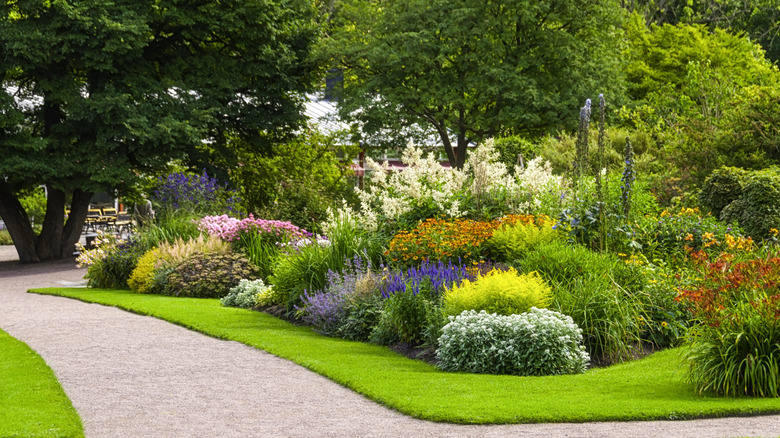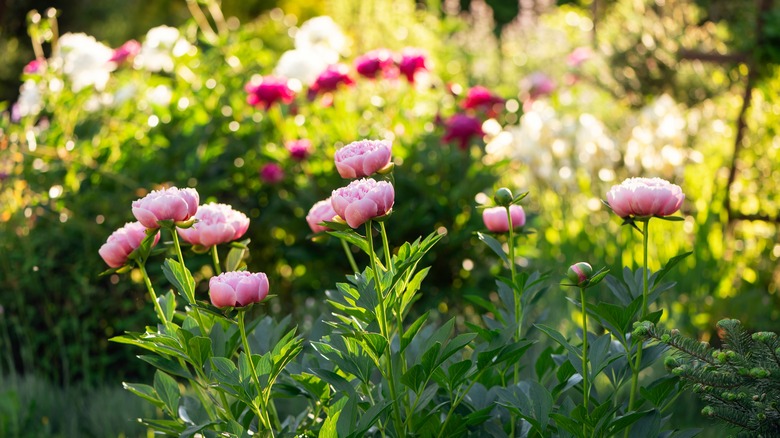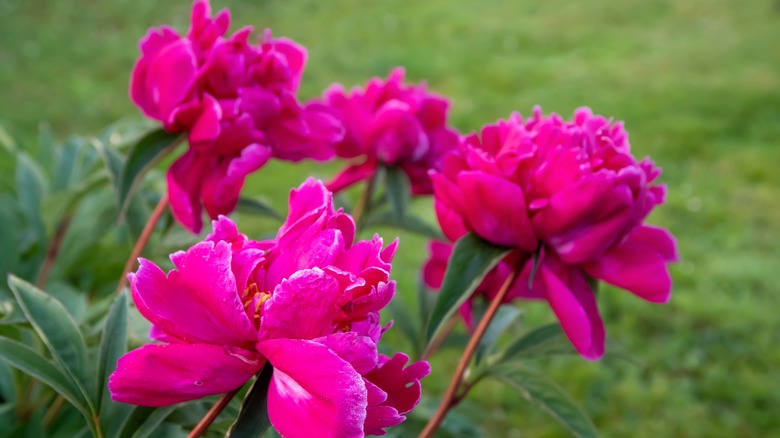The Stunning Flower You Can Plant Now And Enjoy For Decades
While perennials come back year after year, some have shorter lifespans than others. Not all flowers and plants last a long time, and some need to be replaced more often. Peonies are one type of perennial flower that is well worth the investing time and money in. These flowers are known to last for decades, up to 100 years or more, and they aren't too fussy either. While you'll need to spend some time maintaining them to keep them at their best, doing so is easier than you might expect.
Peonies are at least 3-feet wide, 3-feet-tall perennials and are great flowers to add to your garden due to their vibrance. They're available in various colors, with red, pink, white, and yellow being the most popular. They also smell great, and there are three main varieties to choose from, including tree, herbaceous, and intersectional peonies. Once you successfully grow peonies, you can enjoy them for years, as can the next owner of your home if you ever decide to sell.
Ideal conditions for growing peonies
It's best to move peonies once per decade or so after planning them unless absolutely necessary. Aim to get the placement right from the very beginning. You'll want to carefully consider the spot where you would like to grow your peonies and maintain ideal growing conditions to ensure that they'll help improve your home's aesthetic. Remember to plant your peonies where they'll get at least six to eight total hours of sunlight and where the soil is well-draining and fertile with a slightly acidic pH. You should also ensure adequate air circulation, so don't plant them too close together. Also, help them avoid the wind.
Most peonies grow best in USDA growing zones 3 through 7, so consider your region carefully when choosing the best type of peonies for your needs. Since they're ideal for these zones, they will work well almost anywhere in the United States, including Alaska. Many areas around the yard can benefit from peonies. They're well-suited for placing around walkways or a front entryway but can also work in other locations, as long as the conditions are right. To get the most out of your peonies, consider pairing them with companions. There are a lot of great perennials to grow alongside your peonies, including boxwoods, wisterias, irises, and roses.
Giving your peonies the best chance of success
Ideally, it would be best if you aimed to plant peonies in the fall from late September to early October. Ensure that you plant them a minimum of six weeks before ground freezing conditions to keep them safe. While you can plant them in the spring, they won't grow as well as if you plant them in the fall. After planting your peonies, you need to take care of them so that they last as long as possible. Unlike when growing other plants, you shouldn't overdo it with the fertilizer. Use a low-nitrogen fertilizer and fertilize in spring and halfway through the growing season so that peonies will keep growing their best. You'll also want to avoid overdoing it on the mulch but may want to use a loose amount in the winter.
If your peony blossoms are becoming too large for their stems, you may need to add some extra support. It's also important to deadhead peonies as needed. As winter approaches and your peonies start to turn yellow or brown, you should cut them to the ground. This will help prevent disease. Finally, although it's usually unnecessary, consider dividing large peonies if you want to plant them elsewhere.



